Table Of Content
- Understanding Lightning Strikes and Risks
- What Makes Lightning So Dangerous?
- Factors that Increase Lightning Risks
- Essential Lightning Safety Tips
- What to Do if Lightning Strikes Nearby
- Essential Lightning Safety Tips for Campers
- Stay Informed
- Seek Shelter
- Minimize Risks
- Know What to Do
- Create a Safety Plan
- How to Stay Informed about Weather Warnings
- Check Weather Forecasts Regularly
- Sign Up for Weather Alerts
- Pay Attention to the Sky
- Monitor Signs of Approaching Storms
- Choosing the Right Shelter during a Thunderstorm
- Seek a Structured Shelter
- Avoid Open Spaces
- Stay Inside Once Inside
- Emergency Shelter Alternatives
- Lightning Response Kit
- Behavioral Practices to Minimize Lightning Hazards
- Avoiding Lightning Strikes
- Lightning Response Tips
- What to Do if You’re Caught in a Thunderstorm
- Stay Calm and Act Quickly
- Seek Shelter
- Avoid Conduction
- Lightning Positioning
- Wait It Out
- Planning Ahead: Creating a Lightning Safety Plan
- Understand the Risks
- Lightning Safety Essentials
- Stay Informed and Prepared
- Creating Your Lightning Safety Plan
- Frequently Asked Questions (FAQs)
Welcome, outdoor adventurers and camping enthusiasts! As an expert in camping safety, I cannot stress enough the importance of being prepared for all kinds of outdoor hazards, including lightning strikes. When you’re out in nature, it’s crucial to be aware of the potential dangers that thunderstorms can bring and how to protect yourself from them.
Lightning is a powerful force of nature that poses a significant risk to campers if not taken seriously. With the right knowledge and proactive measures, you can minimize the chances of being struck by lightning while enjoying the great outdoors. In this blog post, we will delve into essential lightning safety tips for campers to help you stay safe and prepared during your outdoor adventures.
From understanding how lightning behaves to knowing the appropriate response when a storm rolls in, being well-informed can make all the difference in ensuring your camping trip remains a fun and secure experience. So, let’s equip ourselves with the necessary knowledge and strategies to mitigate the risks associated with lightning and prioritize safety above all else during our outdoor escapades.

Understanding Lightning Strikes and Risks
When embarking on a camping trip, lightning safety for campers should be a top priority. Lightning strikes can be unpredictable and pose serious risks to those outdoors. By understanding the dangers of lightning and how to avoid them, you can ensure a safer camping experience.
What Makes Lightning So Dangerous?
Lightning is a powerful discharge of electricity that can reach temperatures hotter than the sun’s surface. When it strikes the ground or an object, it can cause injury or even death due to its high voltage and intense heat.
Factors that Increase Lightning Risks
- Being in an open area with no shelter
- Handling metal objects
- Standing near tall objects like trees or poles
Essential Lightning Safety Tips
Follow these lightning response tips to avoid lightning strikes while camping:
- Check weather forecasts before your trip
- Seek shelter in a safe location if you hear thunder
- Avoid open fields, isolated trees, and water bodies during a storm
What to Do if Lightning Strikes Nearby
If you are caught in a thunderstorm, remember these camping safety measures:
- Stay away from metal objects and water sources
- Crouch down with your feet close together
- Avoid lying flat on the ground
Understanding the risks associated with lightning strikes and knowing how to respond can make a significant difference in your safety while camping. Don’t take chances with storms – prioritize your well-being by following these weather safety tips.

Essential Lightning Safety Tips for Campers
When you’re out in the great outdoors, enjoying the beauty of nature, it’s crucial to remember that lightning safety for campers is a top priority. Lightning strikes can be unpredictable and dangerous, but with the right knowledge and precautions, you can avoid lightning strikes and keep yourself and your fellow campers safe. Here are some important lightning response tips to keep in mind:
Stay Informed:
Before heading out on your camping trip, make sure to stay informed about weather warnings in the area. Check the forecast regularly and be aware of any thunderstorm alerts.
Seek Shelter:
During a thunderstorm, it’s essential to choose the right shelter to protect yourself from lightning strikes. Avoid open fields, tall trees, and bodies of water. Instead, seek shelter in a sturdy building or a hard-topped metal vehicle.
Minimize Risks:
Practice behavioral practices that can help reduce the risk of being struck by lightning. Avoid holding metal objects, stay away from electronic devices, and refrain from taking a shower or bath during a thunderstorm.
Know What to Do:
If you find yourself caught in a thunderstorm with no shelter nearby, there are steps you can take to increase your safety. Avoid open fields and elevated areas, crouch down on the balls of your feet to minimize contact with the ground, and keep a distance from other people.
Create a Safety Plan:
Before embarking on your camping trip, plan ahead by creating a lightning safety plan with your fellow campers. Establish designated meeting points, emergency contacts, and protocols to follow in case of severe weather.
Remember, when it comes to camping safety, being prepared and proactive can make all the difference. By following these lightning safety tips for campers, you can enjoy the great outdoors while staying safe and protected from the dangers of thunderstorms.

How to Stay Informed about Weather Warnings
When you’re out camping, being aware of incoming weather changes is crucial for your safety. Here’s how you can stay informed and prepared:
Check Weather Forecasts Regularly
Keep a close eye on weather forecasts through reliable sources like weather apps, radio updates, or park rangers’ advice. Being proactive can help you plan ahead.
Sign Up for Weather Alerts
Register for weather alert services that send notifications about severe weather conditions directly to your phone. This way, you’ll receive timely warnings and advice.
Pay Attention to the Sky
Observe the sky for any sudden changes in cloud formations, darkening skies, or distant thunder sounds. Nature often provides visual and auditory cues before a storm hits.
Monitor Signs of Approaching Storms
Look out for signs like rapidly shifting winds, a drop in temperature, or static electricity in the air. These can indicate an imminent thunderstorm, giving you time to seek shelter.
- Grey, darkening skies
- Increasing wind speed
- Distant rumbling thunder
- Drop in temperature
Remember, staying informed and being prepared are your best defenses against unexpected weather changes while camping. Stay safe and enjoy the great outdoors!

Choosing the Right Shelter during a Thunderstorm
When you’re out camping, safety should always be your top priority. Thunderstorms, with the potential for lightning strikes, can pose a serious risk to campers. Knowing how to avoid lightning strikes and respond appropriately can make all the difference in ensuring your well-being. Here are some essential tips for choosing the right shelter during a thunderstorm:
Seek a Structured Shelter:
Choosing a sturdy building or a hard-topped metal vehicle is your best bet during a thunderstorm. These structures provide proper grounding and protection against lightning strikes.
Avoid Open Spaces:
Stay away from open fields, hilltops, isolated trees, or bodies of water during a thunderstorm. These areas increase your risk of being struck by lightning.
Stay Inside Once Inside:
Once you find suitable shelter, avoid any contact with corded electronic devices, plumbing, and windows. Lightning can travel through conductive materials, posing a risk even indoors.
Emergency Shelter Alternatives:
If structured shelters are not available, consider the following alternatives:
- Stay inside a hard-topped metal vehicle
- Seek a low-lying area away from trees
- Avoid water bodies and metal objects
Lightning Response Kit:
- Flashlight
- First-aid kit
- Cell phone for emergencies
Remember, lightning safety for campers is crucial for a successful outdoor adventure. By being proactive and following these guidelines, you can minimize the risks associated with thunderstorms. Being prepared is key to enjoying a safe and memorable camping experience.

Behavioral Practices to Minimize Lightning Hazards
When you’re out camping in the great outdoors, being aware of lightning safety for campers is crucial. Although lightning strikes are rare, they can be extremely dangerous. Here are some lightning response tips and camping safety guidelines to help you stay safe:
Avoiding Lightning Strikes:
- Stay away from tall trees, water, and open fields during a thunderstorm.
- Seek shelter in a sturdy building or a hard-topped metal vehicle.
- Avoid metal objects like fences and poles, as they conduct electricity.
Lightning Response Tips:
- If you hear thunder, immediately seek shelter indoors or in a hard-topped metal vehicle.
- Avoid taking shelter under trees, as they can attract lightning.
- Avoid using electronic devices plugged into outlets during a thunderstorm.
Remember, when it comes to lightning safety for campers, prevention is key. By following these simple camping safety tips and behavioral practices, you can significantly reduce the risk of being struck by lightning.

What to Do if You’re Caught in a Thunderstorm
Picture this: You’re out camping, surrounded by nature’s beauty, when suddenly dark clouds roll in, and the sky is ripped apart by lightning. You find yourself in the midst of a thunderstorm. What should you do to stay safe and ride out the storm?
Stay Calm and Act Quickly
First and foremost, remain calm. Panicking will only cloud your judgment. Make a quick assessment of your surroundings and take immediate action to protect yourself.
Seek Shelter
Find a sturdy, enclosed building if possible. If you’re in the wilderness, seek shelter in a hard-topped metal vehicle or a low area away from trees. Stay away from water sources and open fields, as they attract lightning.
Avoid Conduction
Avoid contact with items that conduct electricity, such as metal objects, electronic devices, and water. Remember, lightning can travel through these conductors and pose a serious threat to your safety.
Lightning Positioning
If you’re in an open area and can’t find shelter, assume the lightning safety position: crouch down with feet together, hands on ears, and head tucked. This position reduces your risk of being struck.
Wait It Out
Remain in your safe location for at least 30 minutes after you hear the last thunderclap. Lightning can strike even after a storm has passed, so exercise caution and be patient.
Remember, your safety should be your top priority when camping. By following these lightning response tips and camping safety guidelines, you can minimize the risks associated with thunderstorms and enjoy your outdoor adventures to the fullest.

Planning Ahead: Creating a Lightning Safety Plan
Hey there, fellow campers! So, you’ve packed your gear, mapped out your route, and you’re all set for an amazing outdoor adventure. But amidst all the excitement, have you thought about how to protect yourself from the unpredictable forces of nature, particularly lightning strikes? Let’s talk about how you can stay safe with a solid Lightning Safety Plan in place.
Understand the Risks
Before embarking on your camping trip, take the time to research the lightning strike risk in the area you plan to visit. Know the signs of an impending thunderstorm and be aware of the safest locations to seek shelter.
Lightning Safety Essentials
Keeping a close eye on the weather forecast and understanding the basics of lightning safety can greatly reduce your risk of being struck. Remember to:
– Avoid open fields and high-ground areas during a thunderstorm.
– Stay away from tall trees and seek shelter in a sturdy building or hard-topped vehicle.
– Wait at least 30 minutes after the last clap of thunder before resuming outdoor activities.
Stay Informed and Prepared
Staying informed about weather warnings and having a reliable communication plan in place can be a lifesaver. Make sure to bring a portable weather radio or keep alert apps handy on your phone.
Creating Your Lightning Safety Plan
Developing a personalized Lightning Safety Plan for your camping trip can make all the difference. Here’s how you can form your own plan:
1. Identify safe shelters and evacuation routes in advance.
2. Establish a communication protocol with your camping companions.
3. Pack essential items like a first aid kit, emergency supplies, and protective gear.
4. Assign roles and responsibilities to each member to ensure a coordinated response.
And remember, staying safe during a thunderstorm requires preparation and vigilance. By taking proactive measures and having a well-thought-out lightning safety plan, you can enjoy the great outdoors without putting yourself at unnecessary risk.
Conclusion
Ensuring your safety while camping should always be a top priority, especially when it comes to unpredictable weather phenomena like lightning strikes. By following the lightning safety tips outlined in this post, you can significantly reduce the risks associated with thunderstorms during your outdoor adventures.
Remember to always check the weather forecast before heading out and be prepared with a plan in case of severe weather. Seek shelter in a sturdy building or a hard-topped metal vehicle if a storm approaches, and avoid open fields, isolated trees, and bodies of water.
Education and preparation are key when it comes to lightning safety for campers. By understanding the risks and knowing how to respond effectively, you can enjoy your camping experience with greater peace of mind. Remember, when thunder roars, go indoors!
Stay informed, stay vigilant, and above all, stay safe. By taking simple precautions and being aware of your surroundings, you can minimize the dangers associated with lightning strikes and ensure a memorable camping trip for all the right reasons.

Frequently Asked Questions (FAQs)
Q: What is lightning safety for campers?
A: Lightning safety for campers refers to the precautions and actions campers should take to avoid being struck by lightning during outdoor activities.
Q: How can campers avoid lightning strikes?
A: Campers can avoid lightning strikes by seeking shelter in a sturdy building or a hard-topped metal vehicle when thunderstorms are nearby.
Q: What are some lightning response tips for campers?
A: Lightning response tips for campers include avoiding open areas, tall trees, bodies of water, and metal objects during storms.
Q: Why is camping safety important during thunderstorms?
A: Camping safety during thunderstorms is crucial to prevent injuries or fatalities caused by lightning strikes.
Q: Can lightning strike inside a tent?
A: Yes, lightning can strike inside a tent, especially if it contains metal poles or if the camper is in direct contact with the tent walls or floor.
Q: How far away should campers stay from trees during a lightning storm?
A: Campers should stay at least 30 feet away from trees during a lightning storm to reduce the risk of being struck by lightning that may hit the tree.








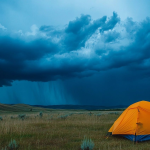
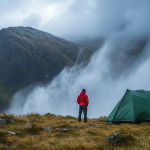
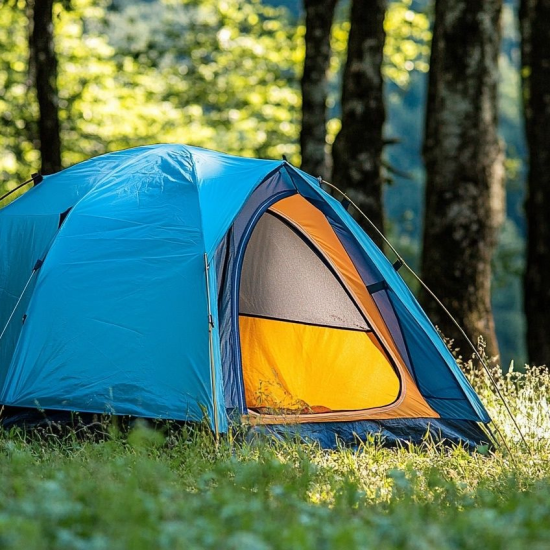
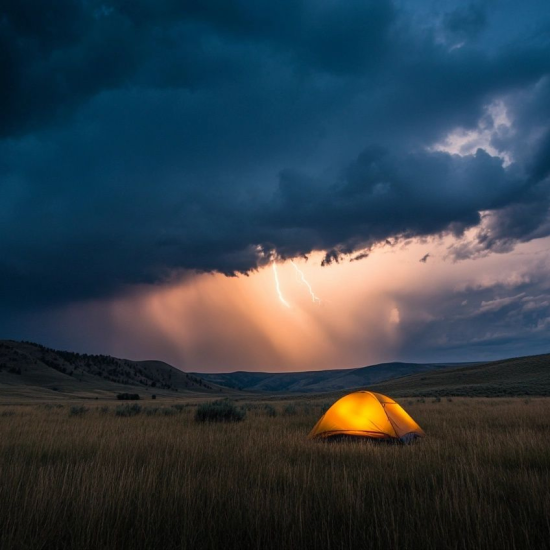
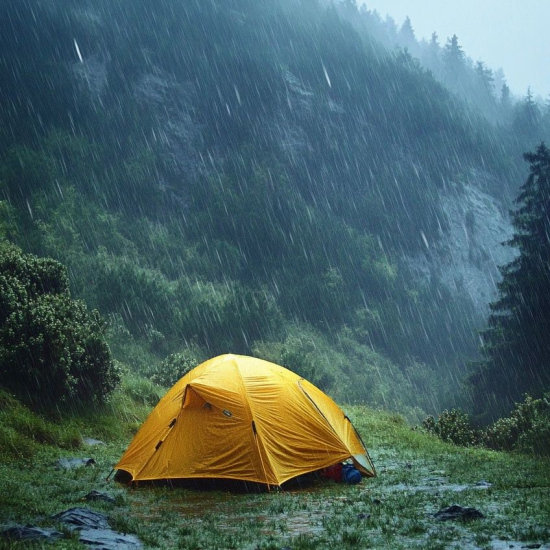
No Comment! Be the first one.